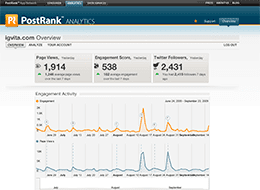Dynamic Search Ads look like other text ads that you see on Google search results pages. But in fact they’re a new way to target searches with relevant ads that link to the most appropriate landing page, all based on the content of your website. You don’t have to choose keywords, tell Google when you add a page to your website or take it down, or create an ad for each product page of your site. AdWords figures out when to show your ads based on the same indexing and relevance technologies used for Google's organic search.
How it works
AdWords uses content from your website domain to target your ads for searches
instead of keywords.
You can tell AdWords whether all pages or just specific sections should be used to target your ads by creating dynamic ad targets. Dynamic ad targets can be your whole website or specific sections of the following:
pages that belong to specific categories
pages that contain certain words
pages whose titles contain certain words
pages whose URLs contain certain strings
Using Google’s organic search index of your website, AdWords determines which searches might be relevant to the products and services offered on this website. When AdWords finds searches that are a match for your dynamic ad targets it generates a text ad in real time that links to the most appropriate page from your website. The headline is dynamically put together by taking words from the search phrase and content from the landing page used in the ad. The rest of the ad is a template that you wrote when you set up or edited your campaign.
Although Dynamic Search Ads change the way that ads are targeted for searches, they won’t impact the way that ads get ranked, the performance of your keyword-based ads, or the amount of control you have over your account.
Same ranking. When entering the auction, the ranking of a dynamic search ad is determined in the same way as keyword-based ads: the maximum cost-per-click bid that you’ve specified for the dynamic ad target and the dynamic search ad’s Quality Score using the same calculations that are used with other search ads. The cost for a click is based on your ad’s Quality Score and the AdRank of the ad just below yours, again, just like with other search ads.
Works with your keyword-based campaigns. Complementary instead of competitive, Dynamic Search Ads don’t trump keyword-based ads. Dynamic Search Ads only show when keyword-based ads for your domain aren’t eligible to run in the auction. And the performance of your Dynamic Search Ads won’t influence your keyword-based ads and vice-versa since AdWords handles the history of your Dynamic Search Ads separately from your other ads.
You’re still in control. With Dynamic Search Ads, you control the dynamic ad targets, ad templates, bids, and your budget. You can use negative keywords, like "free" or "returns," just like with traditional campaigns to avoid showing your ads on searches that don't convert into sales. And you can prevent advertising when specific words or phrases appear on the page, like "temporarily out of stock" or "sold out", when you add dynamic ad targets that exclude pages containing these words. You'll also get full reporting: see the headlines and landing pages of your ads, the ad generated, average CTR and CPC, and conversion data.
Who should use Dynamic Search Ads
You’ll probably get the most value from Dynamic Search Ads if you operate a website with hundreds or thousands of products, services, and listings that frequently change. Do you currently map keywords, bids, and ad text to each product listing on your website? Dynamic Search Ads can help you get more complete ad exposure for more of what you sell, while reducing the effort of keeping your ads, keywords, and destination URLs current.

